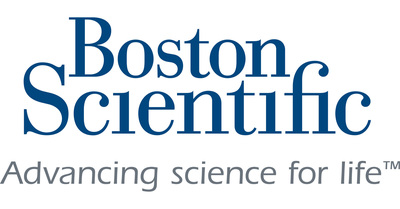Boston Scientific Receives FDA Approval for the AGENT™ Drug-Coated Balloon
- Boston Scientific receives FDA approval for AGENT DCB to treat coronary in-stent restenosis.
- AGENT DCB is the first drug-coated coronary balloon in the U.S.
- Positive results from the AGENT IDE trial show statistical superiority of AGENT DCB over uncoated balloon angioplasty.
- AGENT DCB demonstrates a 49% risk reduction in heart attack at the target vessel.
- Zero definite/probable cases of clotting within the stent were reported with AGENT DCB.
- The technology is indicated to treat ISR in patients with coronary artery disease.
- Boston Scientific plans to launch AGENT DCB in the U.S. in the near future.
- None.
Insights
The FDA approval of the AGENT Drug-Coated Balloon (DCB) by Boston Scientific represents a significant advancement in the treatment of coronary in-stent restenosis (ISR). The approval is based on the AGENT IDE trial, which demonstrated the efficacy and safety of the device. The trial's primary endpoint, target lesion failure (TLF), was significantly lower in patients treated with the AGENT DCB compared to those who received uncoated balloon angioplasty. Additionally, the trial reported no cases of stent thrombosis and a notable reduction in the risk of heart attacks at the target vessel.
From a medical research perspective, the introduction of the AGENT DCB can potentially lead to a paradigm shift in how ISR is managed in the U.S. The ability to deliver paclitaxel, an antiproliferative drug, directly to the vessel wall without additional stenting or radiation, could reduce the risk of restenosis and the need for repeat interventions. This is particularly relevant for high-risk populations, such as patients with multi-layer stents or diabetes, who often have limited treatment options.
Boston Scientific's FDA approval for the AGENT DCB is poised to make a notable impact on its financial performance. As ISR affects 10 percent of percutaneous coronary interventions in the U.S., the market potential for this product is significant. Given the positive clinical trial results and the novelty of the treatment, the AGENT DCB could capture a sizable share of the coronary intervention market. This approval may lead to increased revenue streams for Boston Scientific, especially considering the device's existing presence in Europe, parts of Asia Pacific and Latin America.
The stock market often reacts favorably to such FDA approvals, as they represent both validation of the company's R&D capabilities and the potential for future earnings growth. Investors will likely monitor the upcoming U.S. launch and adoption rates closely, as these will be critical in assessing the long-term financial impact of the AGENT DCB on Boston Scientific's bottom line.
The AGENT DCB's entry into the U.S. market addresses a critical unmet need in the treatment of ISR. Traditional therapies, such as repeat stenting or radiation, come with their own set of challenges and limitations. The AGENT DCB provides a less invasive option that could resonate well with both physicians and patients seeking alternatives to existing treatments. Market research will need to assess the device's reception among cardiologists, patient outcomes and its impact on the standard of care for ISR.
Understanding the competitive landscape is also crucial. The AGENT DCB's success will depend on how it stacks up against other emerging technologies and treatments for ISR. Market dynamics, such as pricing strategies, reimbursement policies and physician training, will play a significant role in determining the uptake of the AGENT DCB in clinical practice. Monitoring these factors will be essential for forecasting the device's market penetration and long-term success.
First coronary drug-coated balloon in
Experience the full interactive Multichannel News Release here: https://www.multivu.com/players/English/9029352-boston-scientific-fda-approval-agent-drug-coated-balloon/
"With more than 100,000 patients treated globally to date in both clinical and commercial settings, we are very pleased to introduce this proven therapy as the first drug-coated coronary balloon in the
While the stenting of coronary lesions continues to show a substantial improvement in quality of life for patients with coronary artery disease, ISR still encompasses 10 percent of percutaneous coronary interventions in the
Following Breakthrough Device Designation granted for the technology by the FDA in 2021, the approval was supported by positive results from the multicenter, prospective, randomized controlled AGENT IDE trial, which enrolled 600 patients at 40 U.S. sites.3 In the prespecified interim analysis of the first 480 patients enrolled, the study met the primary endpoint of target lesion failure (TLF) at 12 months with the AGENT DCB demonstrating statistical superiority to uncoated balloon angioplasty (
"The AGENT IDE trial demonstrated that the AGENT DCB is an effective and safe treatment option for coronary in-stent restenosis, even in a high-risk population, which included many individuals with multi-layer stents or diabetes," said principal investigator Dr. Robert W. Yeh, section chief of interventional cardiology at the Beth Israel Deaconess Medical Center. "Treating ISR has been challenging in the
The AGENT DCB is available in
More information on the AGENT DCB is available here.
About Boston Scientific
Boston Scientific transforms lives through innovative medical technologies that improve the health of patients around the world. As a global medical technology leader for more than 40 years, we advance science for life by providing a broad range of high-performance solutions that address unmet patient needs and reduce the cost of healthcare. Our portfolio of devices and therapies helps physicians diagnose and treat complex cardiovascular, respiratory, digestive, oncological, neurological and urological diseases and conditions. Learn more at www.bostonscientific.com and connect on LinkedIn and X, formerly Twitter.
Cautionary Statement Regarding Forward-Looking Statements
This press release contains forward-looking statements within the meaning of Section 27A of the Securities Act of 1933 and Section 21E of the Securities Exchange Act of 1934. Forward-looking statements may be identified by words like "anticipate," "expect," "project," "believe," "plan," "estimate," "intend" and similar words. These forward-looking statements are based on our beliefs, assumptions and estimates using information available to us at the time and are not intended to be guarantees of future events or performance. These forward-looking statements include, among other things, statements regarding our business plans and product performance and impact, and new and anticipated product approvals and launches. If our underlying assumptions turn out to be incorrect, or if certain risks or uncertainties materialize, actual results could vary materially from the expectations and projections expressed or implied by our forward-looking statements. These factors, in some cases, have affected and in the future (together with other factors) could affect our ability to implement our business strategy and may cause actual results to differ materially from those contemplated by the statements expressed in this press release. As a result, readers are cautioned not to place undue reliance on any of our forward-looking statements.
Factors that may cause such differences include, among other things: future economic, competitive, reimbursement and regulatory conditions; manufacturing, distribution and supply chain disruptions and cost increases; new product introductions; demographic trends; intellectual property; litigation; financial market conditions; and future business decisions made by us and our competitors. All of these factors are difficult or impossible to predict accurately and many of them are beyond our control. For a further list and description of these and other important risks and uncertainties that may affect our future operations, see Part I, Item 1A – Risk Factors in our most recent Annual Report on Form 10-K filed with the Securities and Exchange Commission, which we may update in Part II, Item 1A – Risk Factors in Quarterly Reports on Form 10-Q we have filed or will file hereafter. We disclaim any intention or obligation to publicly update or revise any forward-looking statements to reflect any change in our expectations or in events, conditions or circumstances on which those expectations may be based, or that may affect the likelihood that actual results will differ from those contained in the forward-looking statements. This cautionary statement is applicable to all forward-looking statements contained in this document.
CONTACTS:
Angela Mineo
Media Relations
+1 (763) 955-8325 (office)
Angela.mineo@bsci.com
Jon Monson
Investor Relations
+1 (508) 683-5450
BSXInvestorRelations@bsci.com
* Dr. Robert Yeh is a paid consultant of Boston Scientific Corporation. He has not been compensated in connection with this press release.
1 Shlofmitz E, Iantorno M, Waksman R. Restenosis of Drug-Eluting Stents: A New Classification System Based on Disease Mechanism to Guide Treatment and State-of-the-Art Review. Circ Cardiovasc Interv. 2019 Aug;12(8):e007023. doi: 10.1161/CIRCINTERVENTIONS.118.007023.
2 Moussa ID, Mohananey D, Saucedo J, et al. Trends and outcomes of restenosis after coronary stent implantation in
3 Yeh RW, Bachinsky W, Stoler R, et al. Rationale and design of a randomized study comparing the AGENT drug coated balloon to plain old balloon angioplasty in patients with In-stent restenosis. American Heart Journal. 2021;241:101-107. doi:10.1016/j.ahj.2021.07.008.
4 AGENT IDE Clinical Trial data presented at TCT 2023 by Dr. Robert Yeh.
5 TLF was defined as myocardial infarction relative to the target vessel, the need for a target lesion revascularization (TLR) procedure or cardiac mortality.

![]() View original content:https://www.prnewswire.com/news-releases/boston-scientific-receives-fda-approval-for-the-agent-drug-coated-balloon-302076861.html
View original content:https://www.prnewswire.com/news-releases/boston-scientific-receives-fda-approval-for-the-agent-drug-coated-balloon-302076861.html
SOURCE Boston Scientific Corporation







